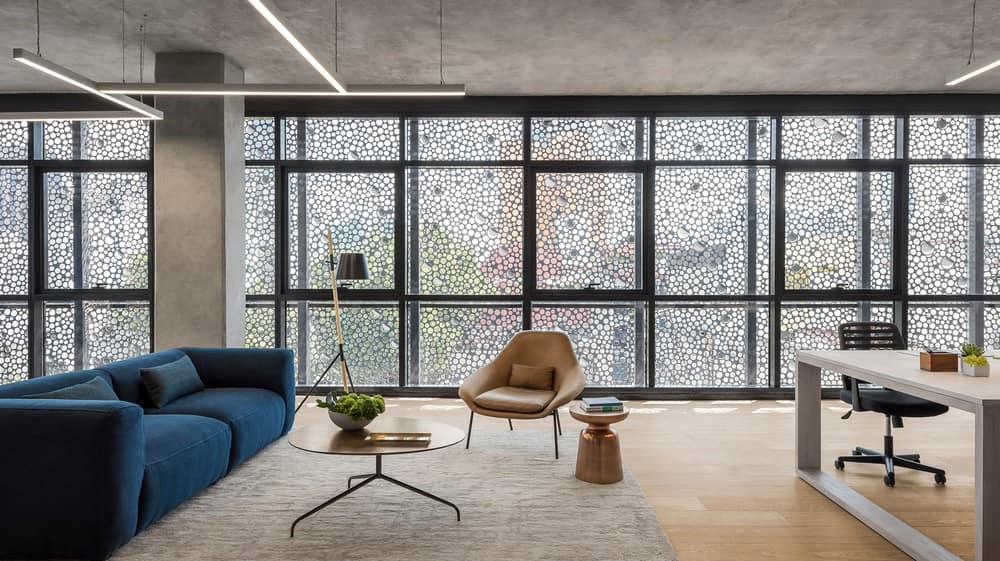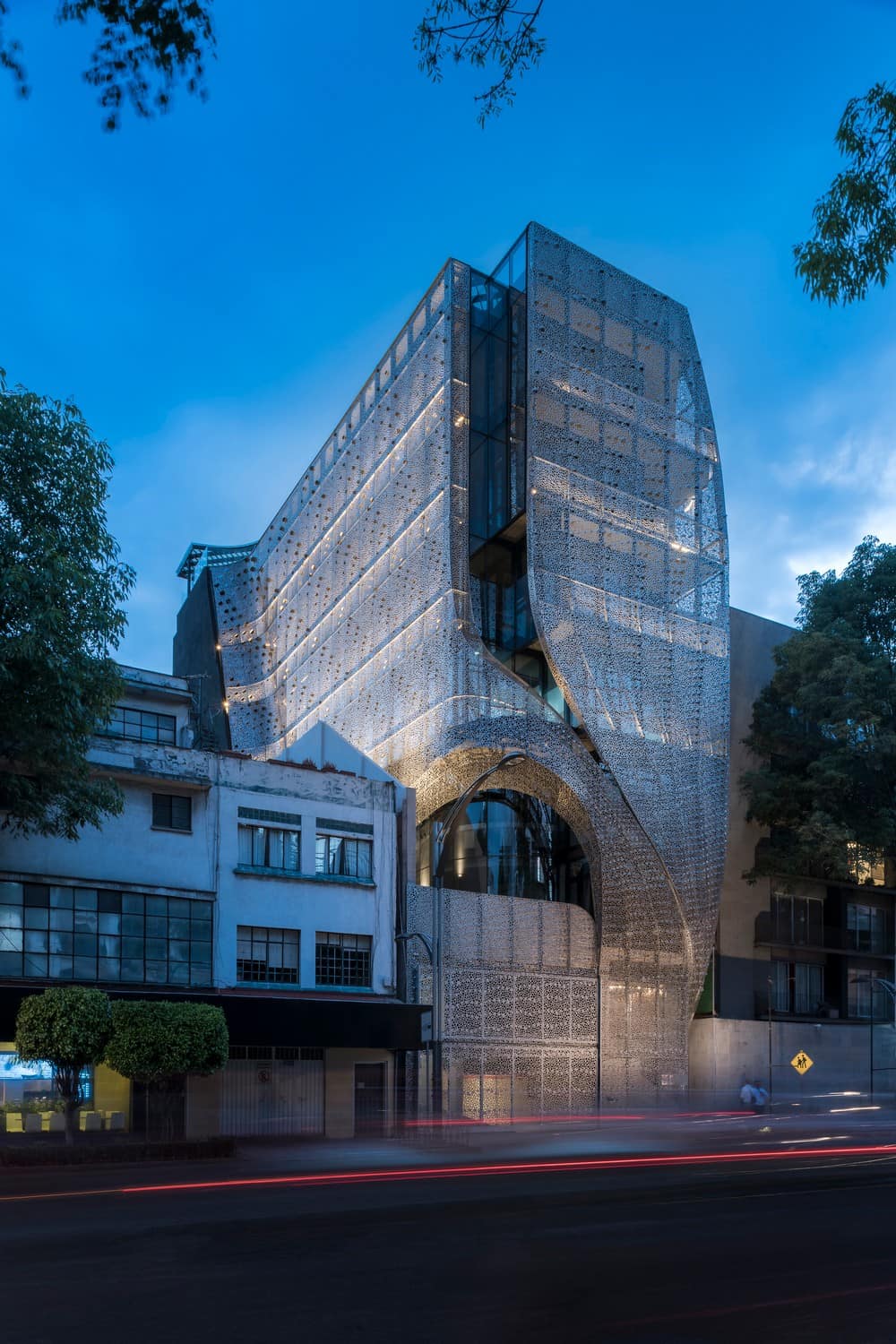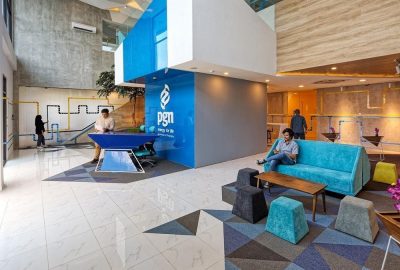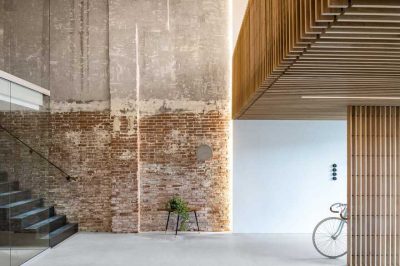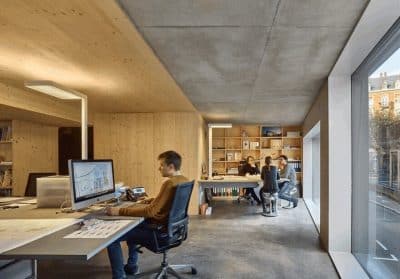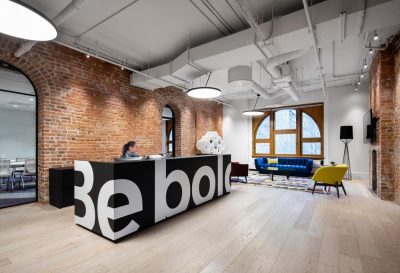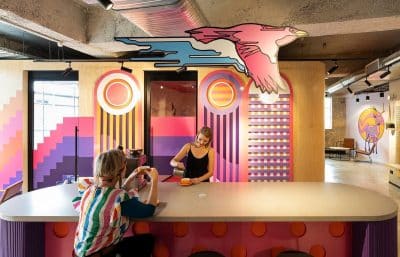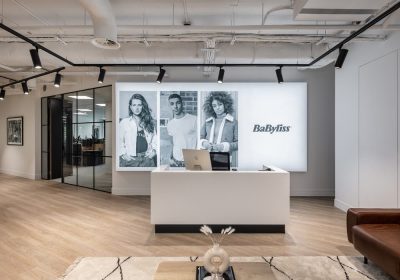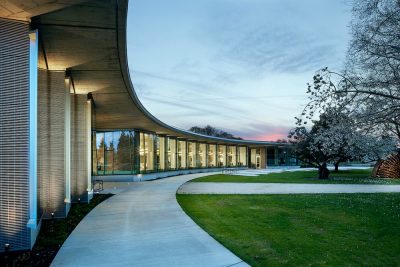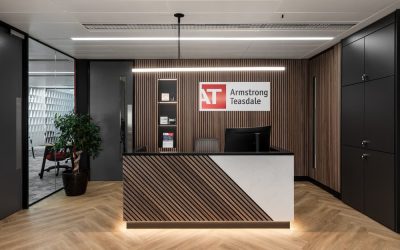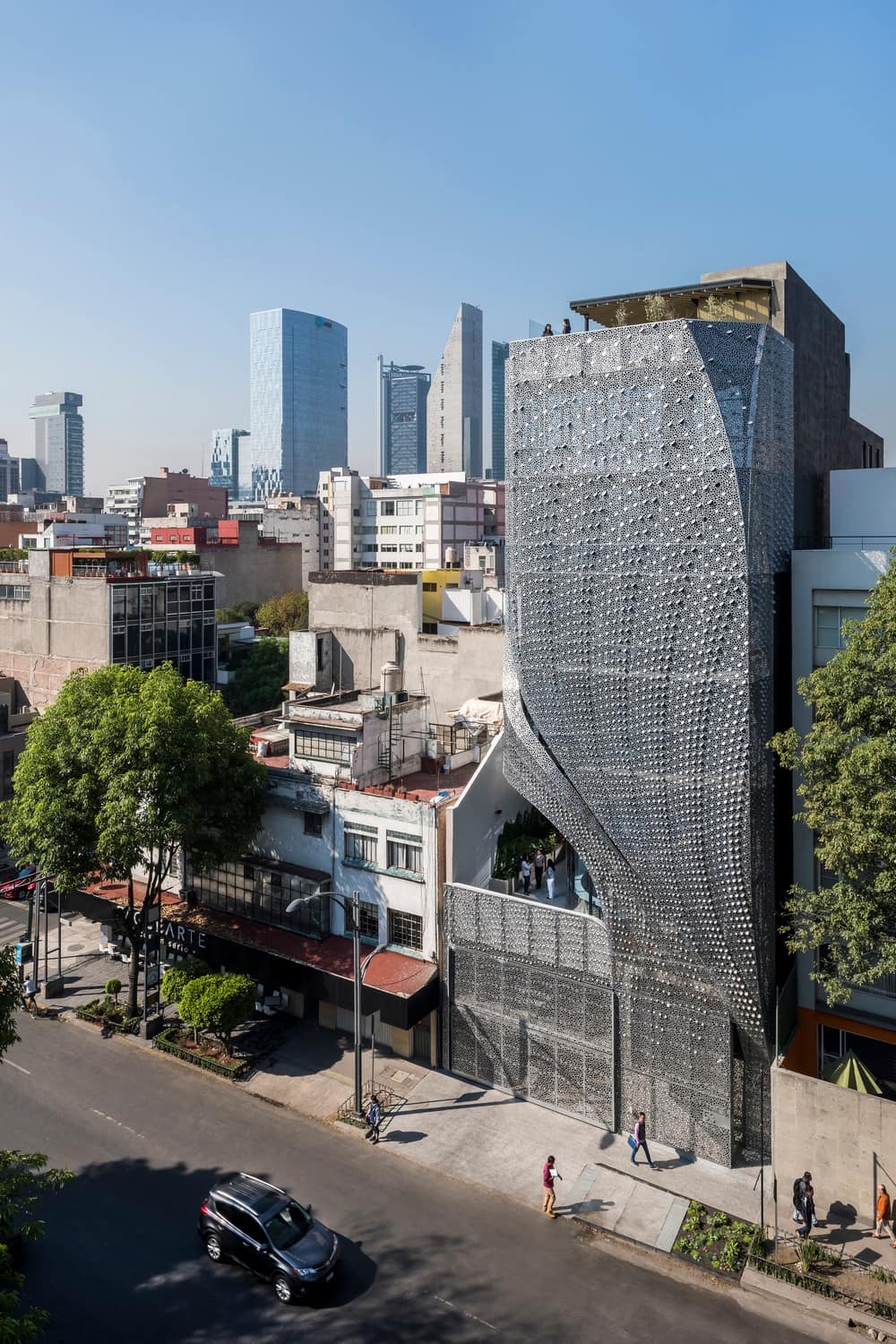
Project: Profiles Office
Architecture: BA Collective (formerly Belzberg Architects)
Structural Engineering: Arup
Design Architect: Hagy Belzberg, Brock DeSmit, Joseph Ramiro
Interior Design: Jennifer Wu, Josh Hanley
Project Team: Cory Taylor, Kris Leese, Jessica Hong, Elizabeth Lee, Chris Sanford, Carolina Murcia, Carlos Pacheco, Jacobo Levy, Omar Torres
Location: Mexico City, Mexico
Area: 2210 m2
Year: 2018
Photo Credits: LGM Studio
Profiles, designed by Belzberg Architects, investigate the design potential of a mid-block property in Mexico City. The eight-story, 24,000 SF office building is located adjacent to a historic three-story building on a busy one-way street in the Cuauhtémoc neighborhood. Mexico City’s density is characterized by buildings of varying heights adjacent to one another throughout the city with the vast majority of mid-block buildings focusing design elements on the street-facing façade.
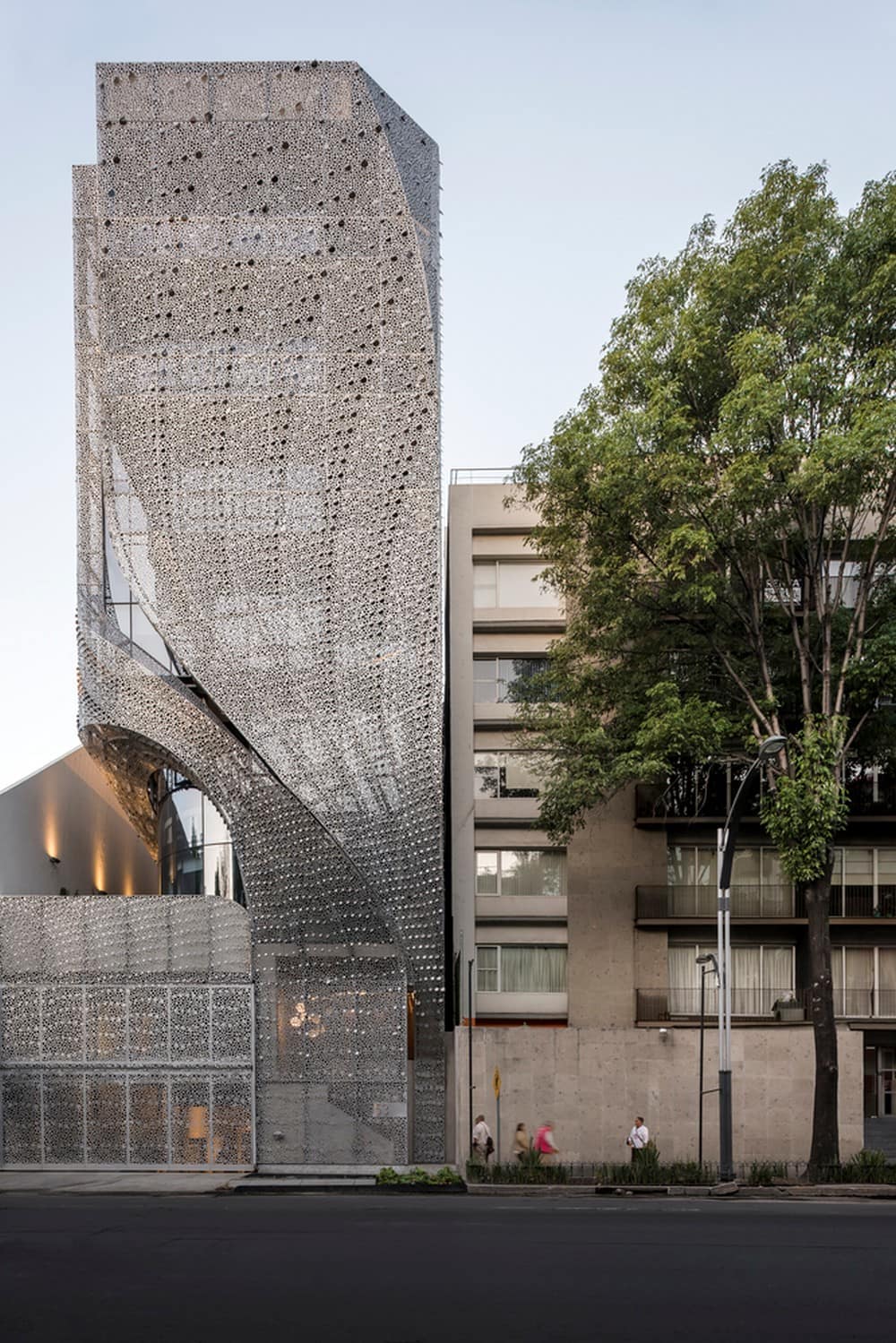
However, the broad side of new buildings that rise above shorter adjacent buildings is often undesigned despite their prominence and visibility in the urban realm. Recognizing this, Profiles reconsiders the side façade of mid-block buildings as important and able to provide benefits that would otherwise be missed.
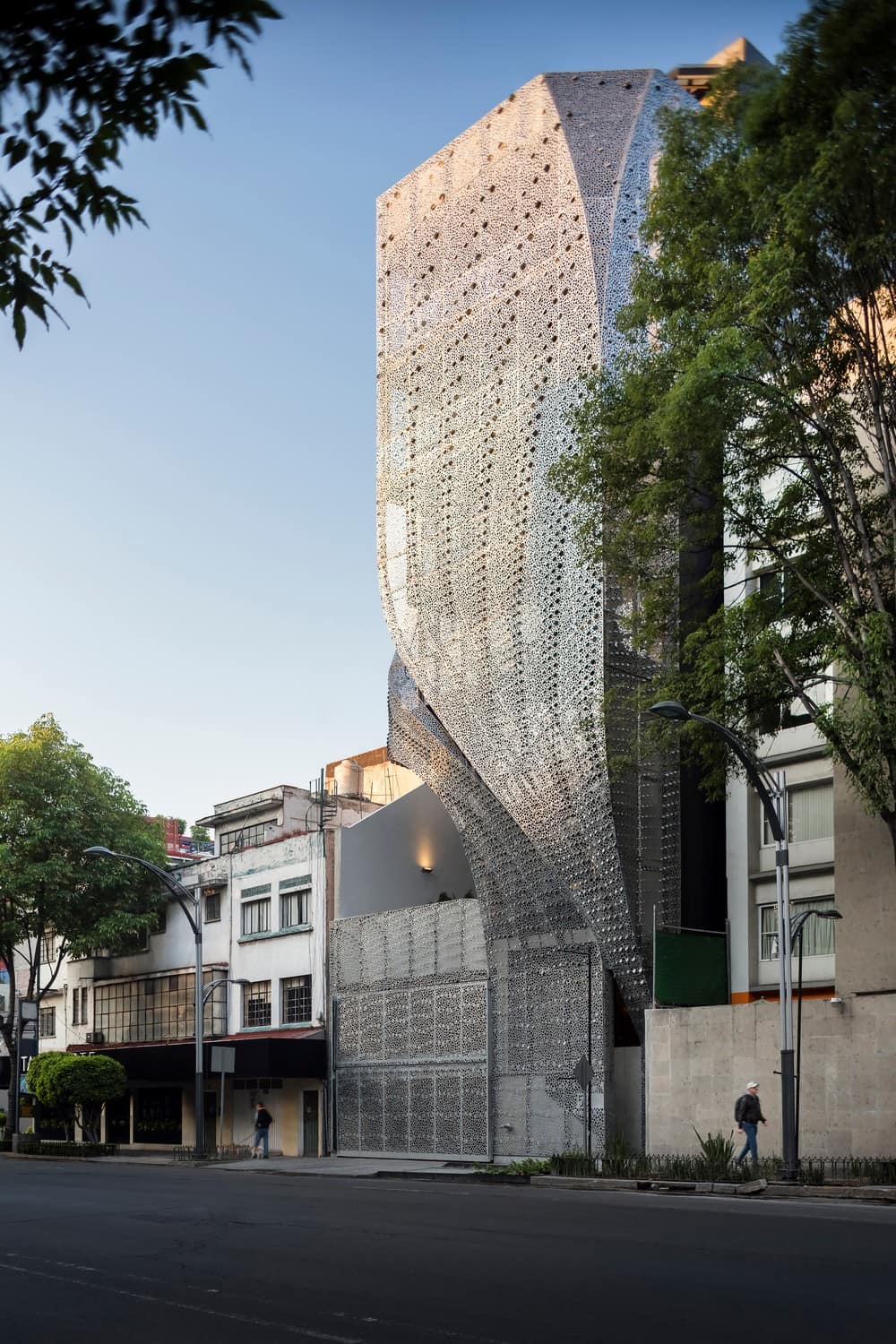
Profiles is set back from its shorter neighbor to the south and are glazed with floor-to-ceiling windows behind the metal façade panels. These panels not only provide exterior shading for the windows but also maximize the connection to the urban realm, pedestrians at street level, and oncoming vehicular traffic.

Each facade is clad with custom-perforated steel panels coated with electrostatic paint. The panels are perforated with a field of varying diameter holes and overlayed with a secondary pattern of larger holes and corresponding steel discs that angle away from the surface at varying degrees. The secondary pattern was overlayed by projecting a two-dimensional pattern from a single vantage point on the sidewalk onto the building’s curving three-dimensional form.
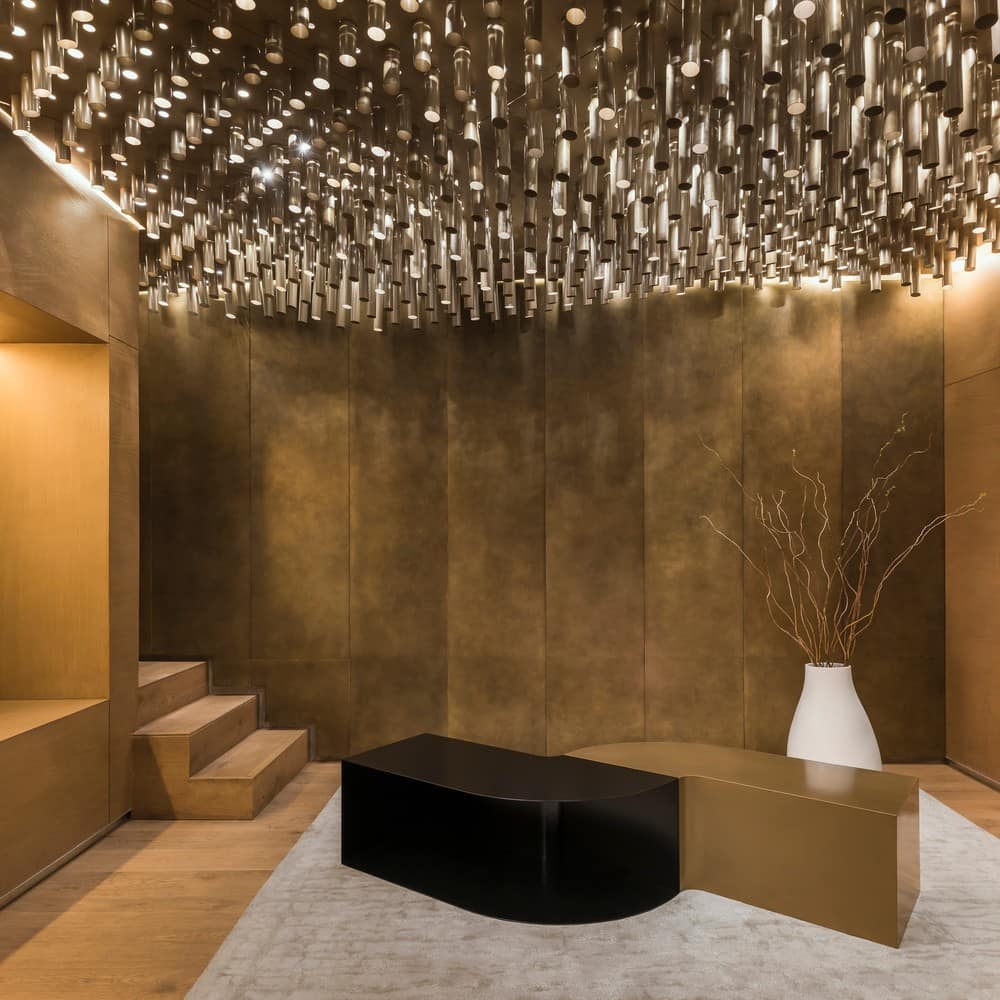
Using the repeated motif of gradually enlarged openings, the visual effect is of sweeping gradations mimicking the tufts of a fabric curtain. The steel discs left attached to the panels change in size to add further depth by softening and dematerializing the appearance of the steel. The angled discs also create dynamic visual effects as lighting conditions change —reflections of varying lights and colors, casting shadows, and at times seeming to disappear completely. From the interior, the panels functionally provide exterior shading for the floor-to-ceiling windows to reduce heat gain and glare while aesthetically offering abstract views of the city beyond as a pointellated field of color.
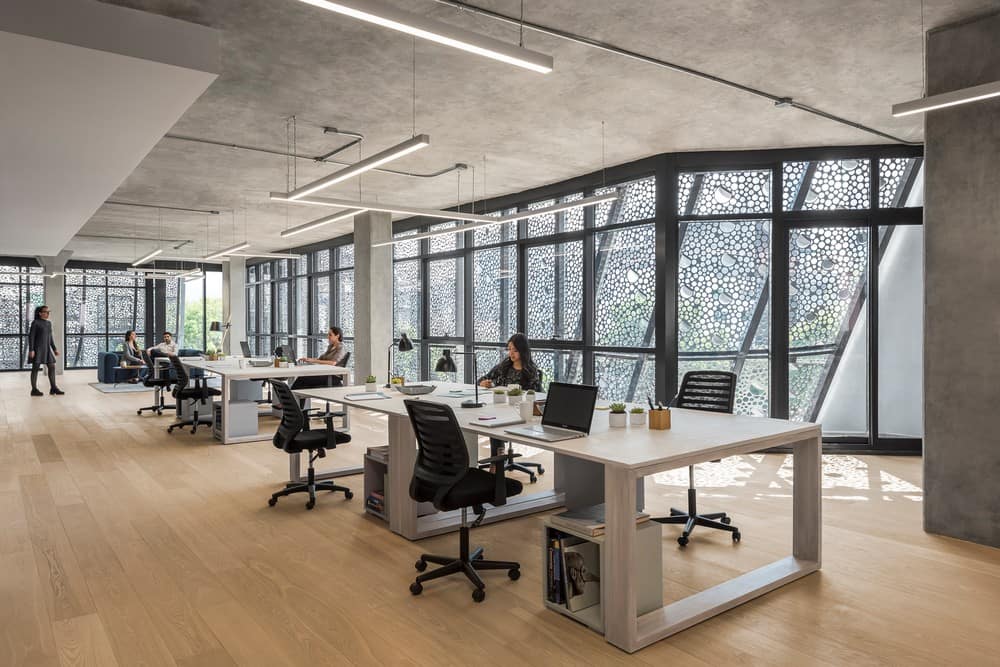
Daylighting, ventilation, and access to outdoor space are prioritized in the design. The setback from the adjacent property results in a building footprint that not only satisfies the open space required by the local planning code but also provides a generous outdoor terrace on the second floor and ensures ample daylight and ventilation for all interior spaces.
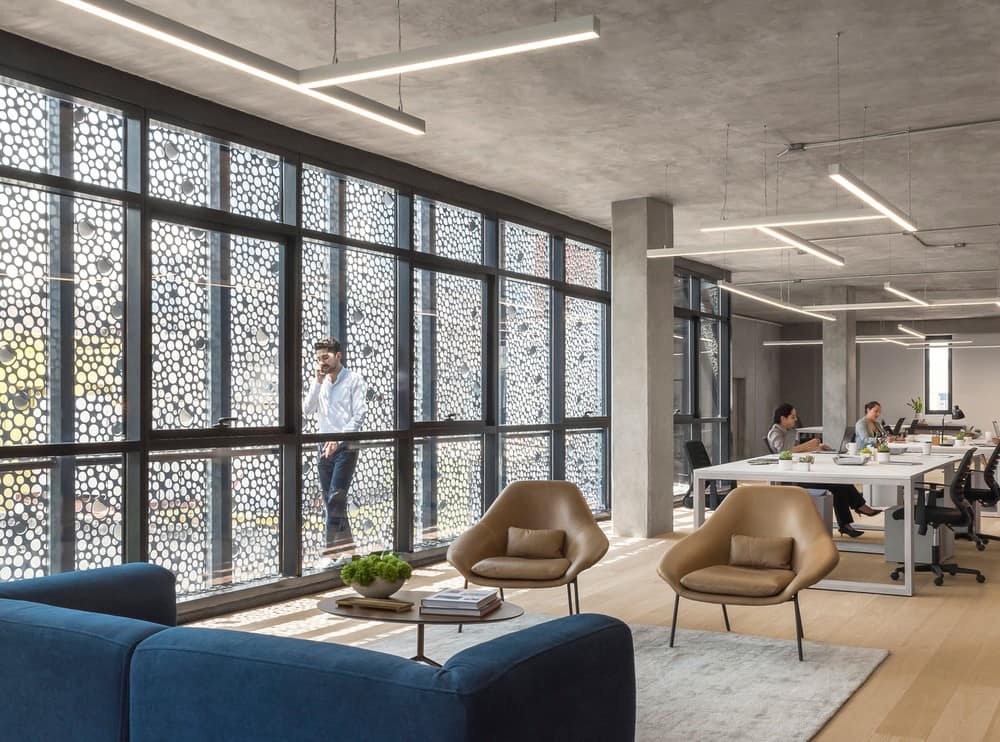
The second-floor terrace is private and secure yet visible from the street and neighboring buildings while multiple smaller balconies are provided at each level above though concealed behind the decorative metal panel façade. The building’s rooftop is designed as a shared amenity space with cabanas, shade trellis, and panoramic views of the city.
